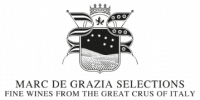2014
Harvest
2014
Harvest
Piedmont
2014 will be remembered for its peculiar climate and in particular for the summer that never started properly. Thanks to a generally mild winter with a lot of rain and snow, the vines completed their vegetative cycle with a good period of rest, while the new vegetative cycle started in a normal way two weeks earlier than in 2013. From mid May onwards the climate (which was warm with a lot of sunlight) favoured a very fast development of the plants. The flowering phase, stimulated by the warm weather, took place at the end of May and was very fast. The climate changed at the beginning of the summer as there were rains together with a low temperature and this made the cycle of the vines longer and the ripening phase of the clusters start later in line with the previous vintages……(source: Assoenologi – Associazione Enologi Enotecnici Italiani). Please find further details regarding the different zones of Piedmont as follows.
MONFORTE (Province of Cuneo): The winter was mild, the springtime and the summer were rainy.
Riccardo Seghesio owner of Azienda Agricola Aldo e Riccardo Seghesio (Barolo DOCG, Barbera d’Alba DOC, Dolcetto d’Alba DOC, Langhe Rosso DOC) ”…we started picking Dolcetto on the 25t h of September and we finished with Nebbiolo on the 16t h of October, a “normal” harvest period which was not early as the previous vintages. We had a lower grape yield for Nebbiolo, but at harvest the grapes were flawless and ripe. The wines are concentrated, the colour and structure are good….”
Giorgio Conterno – Azienda Vitivinicola Paolo Conterno (Barolo DOCG, Barbera d’Alba DOC, Dolcetto d’Alba DOC, Langhe Nebbiolo DOC, Nebbiolo d’Alba DOC): “..we picked Dolcetto starting from the 22n d of September, we picked Barbera starting on the 30t h of September and Nebbiolo starting on the 4t h of October. The harvest ended on the 9t h of October. The ripeness of the grapes was optimal, the sugar content was slightly lower than last year, especially for Dolcetto and Barbera. The sugar content was medium/high for the Nebbiolo for the production of Barolo, thanks to the rigorous selection and to the resistance of this variety which makes a slightly late harvest possible. The grape yield was lower this year. We have an over dimensioned crushing system in order to be able to handle the clusters very delicately starting with the destemming up to the vinification vats. The wines have an excellent colour due to the optimal ripeness obtained by a careful selection in the vineyards and to the careful manual practices carried out on the vines. The acidity is good due to the temperature which was not excessive during the whole summer. The alcoholic strength is slightly lower, in comparison to 2013, for Dolcetto and Barbera. We made the whole range of wines with a slightly lower total production. The first impression of the 2014 vintage is freshness, good acidity, excellent aromatics and good colour. Due to the rigorous selection and due to the lower grape production, this is an excellent vintage for the great crus…2014 could be compared with 2010. The alcoholic fermentation was carried out exclusively with indigenous yeasts….”
LA MORRA (Province of Cuneo): The winter was rainy, but the temperature was mild. This favoured the beginning of the vegetative cycle of the vines which took place approximately two weeks earlier than 2013. The springtime was warm and with a lot of sunlight and this favoured a fast development of the vines. The weather during the months of June, July and during a part of August was cool and rainy (there was some hail, but this luckily did not cause bad damages). In September and in October there was less rain with a warm temperature that was above average in October.
Carlo Revello – Azienda Agricola Fratelli Revello (Barolo DOCG, Barbera d’Alba DOC, Dolcetto d’Alba DOC, Langhe Nebbiolo DOC)”..we harvested the Nebbiolo grapes for the production of Barolo from the 7t h till the 17t h of October. The grapes were flawless. The yield was lower in comparison to the previous vintages. We are now racking off the wines which have a good colour and a good acidity, the alcohol strength is slightly lower than the other vintages. We will have a better idea in a couple of months…..”
Paolo Grasso – Azienda Agricola Silvio Grasso (Barolo DOCG, Barbera d’Alba DOC, Dolcetto d’Alba DOC, Langhe Nebbiolo DOC)”..we picked Dolcetto from the end of September till the beginning of October. We picked Barbera and Nebbiolo from the beginning till mid October and we picked Nebbiolo for the production of Barolo from mid October till the end of the month. The Dolcetto grapes had a slightly lower sugar content, but that will produce wines that will be pleasant to drink. The Barbera grapes reached a good ripeness, we had to carry out a lot of work in the vineyards in order to control Botrytis. Vineyards with a good exposure and where proper agronomic practices were carried out (mainly green harvest) produced healthy clusters with a good sugar content and with slightly higher acidity. Nebbiolo, being a variety that ripens late, benefited from the good weather in September and in October and ripened well. In 2014 in particular, we noted how the vineyards with a good exposure and which were particularly suited for viticulture produced grapes with good and sometimes unexpected ripeness. The grape yield was slightly lower than average. We worked a lot in the vineyards this year in order to prevent disease and pests and we carried out agronomic practices in order to expose the clusters to the sunlight (deleafing etc.). The colour of the wines is in line with the previous vintages. The alcohol strength of the wines for immediate consumption is slightly lower, while the alcohol strength of the Baroli is good…2014 was a difficult and costly vintage, but the wines are of high quality. The alcoholic fermentation was carried out with indigenous yeasts….”
SERRALUNGA (Province of Cuneo): The vegetative cycle of the grapes started early, but it then slowed down due to the weather during the summer that was more rainy and cool than usual. Luckily the weather in September and in October was dry and warm and this was very positive for the quality of the grapes.
Giampaolo Pira of Azienda Agricola Pira Luigi & Figli (Barolo DOCG, Barbera d’Alba DOC, Dolcetto d’Alba DOC, Langhe Nebbiolo DOC): “…we picked Dolcetto from the 18t h till the 20t h of September, Barbera at the end of September/beginning of October, Nebbiolo from the 10t h till the 15t h of October. The quality of the grapes and of the wines is good, the production is lower. We went through the vineyards many times before the harvest (dropping fruit) and during the harvest selecting the clusters. The wines are subtle, fresh and elegant. Although the climate was different, 2013 and 2014 are similar as elegance is the main characteristic of the wines of these two vintages. Nebbiolo ripens late so that the grapes benefited very much from the good weather in September and in October. The Nebbiolo musts are now fermenting and the forecast is good…..”
BARBARESCO (Province of Cuneo): 2014 was a complex vintage. The winter was very mild, while the summer was rainy and cool. The careful work in the vineyards, such as green pruning to air the canopy and dropping fruit, ensured healthy grape clusters. The climate was good in September and in October, it was dry with a good night/day temperature range, consequently the ripeness of red and of white varieties was optimal. The area of Barbaresco was privileged, as the quantity of rains was three times inferior in comparison to the rest of Piedmont and there was no hail.
Sergio and Martina Minuto of Azienda Agricola Moccagatta (Barbaresco DOCG, Barbera d’Alba DOC, Langhe Chardonnay DOC, Dolcetto d’Alba DOC, Langhe Nebbiolo DOC):”…we picked from the 15t h of September till the 9t h of October. The order of the varieties picked was: Chardonnay, Dolcetto, Barbera and Nebbiolo. The grape yield was lower in comparison to 2013. The quantity of grapes was lower already in the springtime and dropping fruit in the summer was important in order to ensure high quality in a more humid vintage. We follow organic practices in the vineyards. We have not used herbicides for many years and we do not use systemic products nor other products which are not allowed when practicing organic viticulture. The alcoholic strength of the wines is slightly lower, the colour is very rich, the acidity and the freshness are excellent and the aromatics are fruity. In 2014 we started an organic management of the vineyards. 2014 was a difficult, but excellent vintage. It is difficult to compare 2014 with another vintage, but it reminds one of 2010 (a cool vintage) and of 2007 (where the winter was mild)….”
ROERO (Province of Cuneo): It was rainy during the springtime and for most of the summer. Luckily the months of August and of September were quite dry.
Alfredo Falletti – Castello di Malabaila di Canale (Roero DOCG, Roero Arneis DOCG, Langhe Rosato DOC, Nebbiolo d’Alba DOC, Barbera d’Alba DOC): “…the harvest started on the 13t h of September with Arneis and finished on the 14t h of October with Nebbiolo…Luckily the grapes managed to ripen. The Arneis wines have excellent and very interesting aromatics, the acidity is a bit higher than usual. The Nebbiolo grapes ripened very well. The wines are well-balanced, the tannins are ripe, the colour is good. We have had good results also with the Brachetto wines which show good aromatics. In general the alcoholic strength of the wines is a bit lower in comparison to the previous vintages. This year we worked very hard in the vineyards as there was a lot of vegetation. Starting from this year we are certified with a European organization for sustainable viticulture…”
DOGLIANI (Province of Cuneo): It was not very cold during the winter. The budding phase of the vines started 10 days earlier than usual. Until May the weather was normal then it was rainy in June and in July there was some hail. This made the vegetative cycle of the vines become longer. The weather was good in August, but the temperature was lower than average. In September the weather was quite cool with a couple of rainfalls.
Paolo Boschis – Azienda Agricola Francesco Boschis (Dolcetto di Dogliani DOC, Dogliani DOCG, Barbera d’Alba DOC, Piemonte Barbera DOC, Langhe Freisa DOC, Piemonte Grignolino DOC, Langhe Bianco DOC): “..we picked Sauvignon Blanc and Dolcetto from the 22n d till the 27th of September. Then we waited and we picked Freisa and Barbera on the 3r d and 4t h of October. The grapes were healthy and ripe at harvest and this was thanks to the anti-hail nets that we have and thanks to the work that we carried out in the vineyards. At the end of July, beginning of August we deleafed the vines and we dropped fruit. The grape yield this year was lower. The wines have an intense colour, the alcohol strength is slightly lower than the previous vintages. We will have to wait till the malo-lactic fermentation is over next January/February in order to evaluate the wines and to decide whether we will release the whole range…….”
CAPRIATA D’ORBA (Monferrato – Province of Alessandria): The winter was mild with a temperature above average. The springtime was short. The rainfall during the summer was above average. It was sunny in September.
Cristian Pomo – Azienda Agricola Stefano Massone (Gavi DOCG) and Camporosso (Gavi DOCG)”..the harvest started on the 17t h of September and finished on the 30t h of September. The grapes had a good concentration of aromatics and the ripeness was well balanced. The grape yield was 9 tons/hectare. Cover crops were left on every other aisle between the rows of vines, partial crio- maceration of the grapes was carried out in the cellar….The wines of the 2014 vintage present a harmonic combination of aromatics and of acidity. Each vintage is unique, but maybe 2014 can be compared to 2004. We use yeasts that are selected from our grapes for the alcoholic fermentation..”


